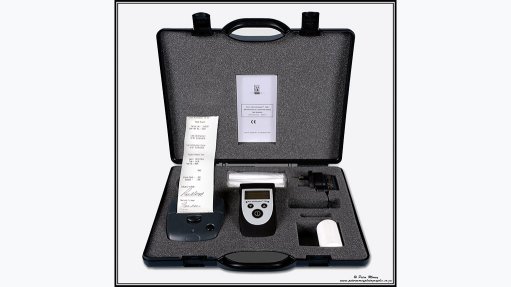Automation of business processes to change expectations and services
New methods of rapidly and accurately delivering services using robotic process automation (RPA) is driving a shift in the expectations of end-users and, similar to other automation innovations, will underpin a change in economies, says RPA multinational UiPath chief strategy officer Vargha Moayed.
This development of new delivery, use and economic models will also require new skills and lead to new professions emerging.
“With new capabilities, new client expectations become commonplace. A good example is the introduction of autoteller machines in the 1950s, which caused a change in demand for more personalised banking services from bank employees, as the task of dispensing money was removed from their workloads.”
UiPath recognises similar changes with the advent of software robots as the digital workforce that automates repetitive, administrative work processes and, in some cases, entire work streams, such as entering orders or allocating invoices to accounts. RPA enhances customer experiences, and enables employees to focus on complex tasks instead of the mundane ones.
“The fundamental needs that businesses must meet remain the same,” says Moayed.
For example, in call centres, RPA aggregates information and allows for a single and holistic view of a client, the nature of a query to be determined through voice or text communication and the direction thereof to the correct department and person, who also has all the information on hand to address it, he illustrates.
However, Moayed emphasises that the availability of skilled people in companies to adopt RPA is a key success factor for RPA vendors.
Therefore, UiPath provides an open learning platform, UiPath Academy, and a free trial version of the RPA for individuals and organisations to learn about and experiment with the technology. It also provides certification for completed courses and direct training for clients’ employees, if requested.
More than 400 000 people, most without any coding experience, have been certified in a variety of RPA skills on this open platform.
UiPath has also partnered with more than 100 universities worldwide through its Academic Alliance programme, which are getting ready for provide a range of RPA courses for students and educators, he adds.
Moayed notes that software robots have company identity numbers, with database access and writing privileges strictly limited to their functions.
“RPA is quick and easy to adopt. Someone who does not know how to write code can build their own software robots and deploy them.”
On the UiPath software platform, there is also an RPA Orchestrator that manages the distribution and use of software robots throughout a company. All decisions and actions taken by a software robot must be set up by a person according to company policies, while some key decisions and permissions must always be authorised by an employee, called a human-in-the-loop arrangement, he explains.
Additionally, each action taken and decision made by a software robot is logged and can be traced and audited, which also helps companies to improve their processes and software robots, he adds.
“We are finding that audit departments, instead of running audits once or twice a year, can now run audits and produce reports easily on a monthly or even weekly basis for critical areas,” notes UiPath South Africa sales director Lenore Kerrigan.
UiPath envisions every employee having a robot as a digital assistant that can perform a range of tasks linked to the employee’s functions, such as checking documents and highlighting obscure issues, such as a value-added tax figure that might have been overlooked.
Securing software robots from cyberattacks is similar to providing cybersecurity for employees. The same systems that employees have to interact with to perform their functions are those the robots have to interact with and, therefore, the same rules, restrictions and security applies, explains Moayed.
There is also a module specifically on cybersecurity on the UiPath academy platform, adds Kerrigan.
“Technology constantly transforms economies and increases client expectations. We expect that RPA will lead to new jobs being created, as companies can provide more services faster and at a lower cost, which will help to reduce prices and free up resources that can be redirected,” concludes Moayed.
Article Enquiry
Email Article
Save Article
Feedback
To advertise email advertising@creamermedia.co.za or click here
Comments
Press Office
Announcements
What's On
Subscribe to improve your user experience...
Option 1 (equivalent of R125 a month):
Receive a weekly copy of Creamer Media's Engineering News & Mining Weekly magazine
(print copy for those in South Africa and e-magazine for those outside of South Africa)
Receive daily email newsletters
Access to full search results
Access archive of magazine back copies
Access to Projects in Progress
Access to ONE Research Report of your choice in PDF format
Option 2 (equivalent of R375 a month):
All benefits from Option 1
PLUS
Access to Creamer Media's Research Channel Africa for ALL Research Reports, in PDF format, on various industrial and mining sectors
including Electricity; Water; Energy Transition; Hydrogen; Roads, Rail and Ports; Coal; Gold; Platinum; Battery Metals; etc.
Already a subscriber?
Forgotten your password?
Receive weekly copy of Creamer Media's Engineering News & Mining Weekly magazine (print copy for those in South Africa and e-magazine for those outside of South Africa)
➕
Recieve daily email newsletters
➕
Access to full search results
➕
Access archive of magazine back copies
➕
Access to Projects in Progress
➕
Access to ONE Research Report of your choice in PDF format
RESEARCH CHANNEL AFRICA
R4500 (equivalent of R375 a month)
SUBSCRIBEAll benefits from Option 1
➕
Access to Creamer Media's Research Channel Africa for ALL Research Reports on various industrial and mining sectors, in PDF format, including on:
Electricity
➕
Water
➕
Energy Transition
➕
Hydrogen
➕
Roads, Rail and Ports
➕
Coal
➕
Gold
➕
Platinum
➕
Battery Metals
➕
etc.
Receive all benefits from Option 1 or Option 2 delivered to numerous people at your company
➕
Multiple User names and Passwords for simultaneous log-ins
➕
Intranet integration access to all in your organisation


















